A question that comes up often on various Nikon oriented internet forums is which lens is more suitable, the Nikon 300mm f/2.8G VR, or the Nikon 200-400mm f/4G VR? Obviously this is a very loaded question, as it depends what the photographer is intending to use the lens for, but I will use this blog post to try and answer the question from my experience with these lenses, which is predominantly nature based. This is not intended to be a technical review, simply comments based upon my own experiences.
I have owned the 200-400/4VR for 3 or 4 years now, and earlier this year picked up the 300/2.8VR as well. I use both lenses on the D3, and have previously used the 200-400 and the 300 on the D200.
Of course, being a zoom, the 200-400 wins here. On DX, the effective focal range of 300-600mm means the 200-400mm is a very effective lens for using for general nature photography, and I used it with success on a number of field trips over the past couple of years. Perhaps the time I was most thankful for the lens was when I took it with me on a safari in Africa. One of the main 'problems' with safari photography in Africa is the amount of dust that finds its way into the camera. This is further amplified by lens changes, so the ideal solution is to have a single lens that covers all eventualities. I found the 200-400mm to be just this, and it was pretty much the only lens I needed to use when shooting out of the safari jeep:
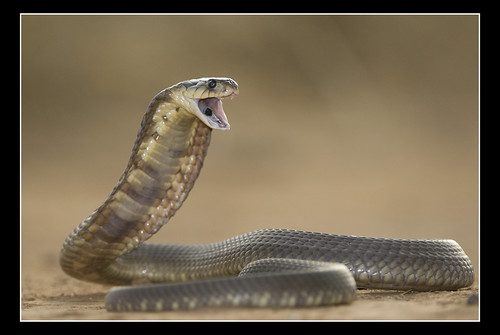
I also took the lens with me on a trip to photograph puffins in Scotland and Northern England, and again the 200-400 on a DX body came into its own, allowing me to shoot birds all day without switching lenses.
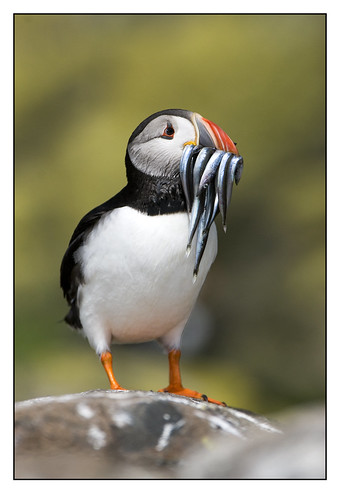
The flexibility that the 300/2.8 offers is slightly different. Although hand held shooting is not too much of a problem with the 200-400, the lens does tend to get heavy after a while. The 300/2.8 is a slightly smaller and more lightweight lens, and the ergonomics mean that walking around with it in the hand or on the shoulder is comfortable, and can be used for an extended period of time, such as in the shot below where I had been tracking the deer through the woods for some time.
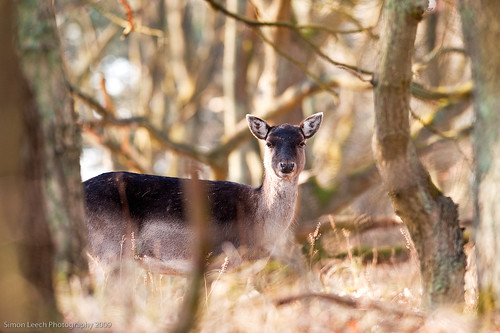 <
<Especially since turning to full format, I have been using my telephoto lenses more and more often with teleconverters. This is an advantage of the fixed aperture pro telephotos that do allow the use of teleconverters whilst maintaining all functionality.
However it is with teleconverters that the 300/2.8 has advantages. It is a full stop faster than the 200-400, which means that the light loss caused by the tc-14e and 17e still leaves the photographer with a usable combination - either a 420/4 or a 510/4.8. This should really be compared to the 200-400 together with the 1.4, which, at the top end, becomes a 560/5.6.
With the tc-14e:
Both lenses work fine with this tc, but the focus on the 200-400 does seem to suffer slightly in terms of speed, especially in duller light. In good light the image quality on the 200-400 is fine, but in slightly worse light, the 300mm with tc leaves the 200-400 behind. The following shot was taken with the 300mm on a D200 with the tc-14e, in early morning, overcast light:
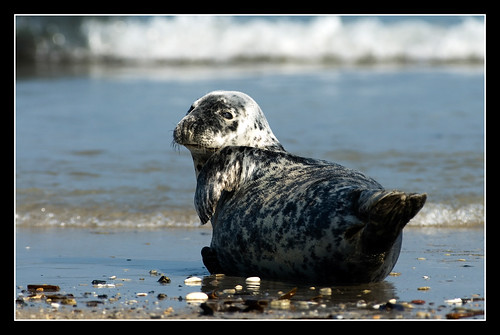
With the tc-17e:
The 200-400 works, but has occasional AF problems, and can not be trusted in low light. The 300/2.8 works fine, and AF is still spot on. Image quality wise, the 300 beats the 200-400 here.
Handling:
Both lenses offer the build quality and usability of every Nikon pro lens. Most switches (for example focus limiters AF on/off) are in the same place on each lens. One notable difference between the two is that with the 300/2.8 the VR is turned on using a ring, whereas the VR on the 200-400 is activated by a switch alongside the other switches. From experience this is a lot harder to see, and a lot easier to knock on and off without noticing.
Image quality:
Both lenses are capable of excellent quality images, both with and without teleconverters. However I have always had a bit of a love hate relationship with the 200-400. I sometimes get the feeling that it really is a good weather lens - if the light is a bit grey and dreary, the 200-400 will amplify that and I will come away with unsatisfying images. The 300/2.8 on the other hand never fails to impress me. Even in lower light, I can still get spot on focus, and sharp contrasty images, such as the following image taken from a boat.
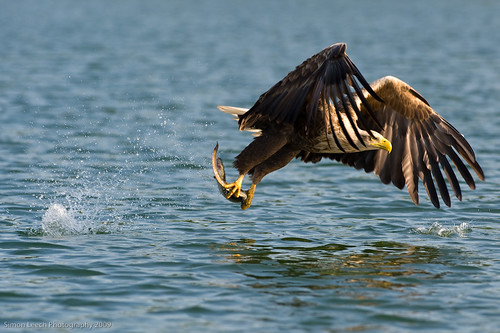
Conclusion:
To be honest, if I had to sell one of the two lenses, I would keep the 300/2.8, and sell the 200-400. Although the 300 isn't a zoom, what it lacks in flexibility, it makes up for in speed and image quality, and with the teleconverters it is almost as flexible. Especially when paired with the 600/4, it provides the wildlife photographer with an excellent tool set. But remember, both are pro quality lenses, and I am just picking faults. Either lens is capable of top images.





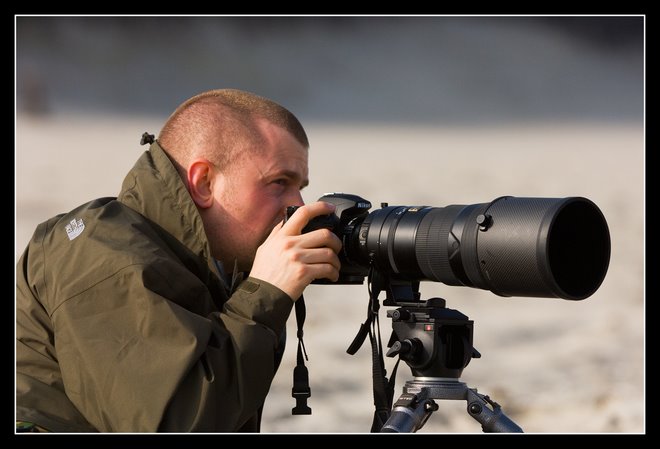
3 comments:
Hi Simon,
Great review man, and a story that finaly tells the the true problem about the 2-400..
Like you said the 2-400 is a great lens and the zoom is a big advantage but like the most wildlife photographers we have to work sometimes in not so ideal condition of light.
And that is the big problem with the 2-400 against the 300.
Keep this good work going and al the best for you and your family
Much money to get nikon 300mm f/2.8G VR...but nice photo..great job man..!
Great comparison of those two lenses! I am currently thinking about which one would fit my needs best. I currently shoot with the 70-300 VR, but I would like to have a long lens that is faster, both in terms of aperture and AF-speed.
After reading your post, I have one more question: how do the two lenses compare in terms of image quality and AF-speed when used at about the same focal length (i.e. 200-400 vs. 300 + 1.4x TC and 200-400 + 1.4x TC vs. 300 + 2x TC)?
Please also feel free to check out my new blog at
www.rap-photography.com
Post a Comment